Today, my laboratory looks more like a scene from a sci-fi film than a psychology research space. Wires snake across tables, sensors lay carefully arranged on trays, and a bucket of ice water sits in the corner, quietly waiting its turn.
This work is part of the University of Illinois Urbana-Champaign's department of biomedical and translational sciences at the Carle Illinois College of Medicine. The college is training a new generation of physicians to develop transformative health care solutions by integrating engineering, science and medicine. This experiment is meant to help us understand how stress affects the body and mind, and to develop devices that will aid in diagnosis, monitoring and treatment of mental health symptoms, such as anxiety.
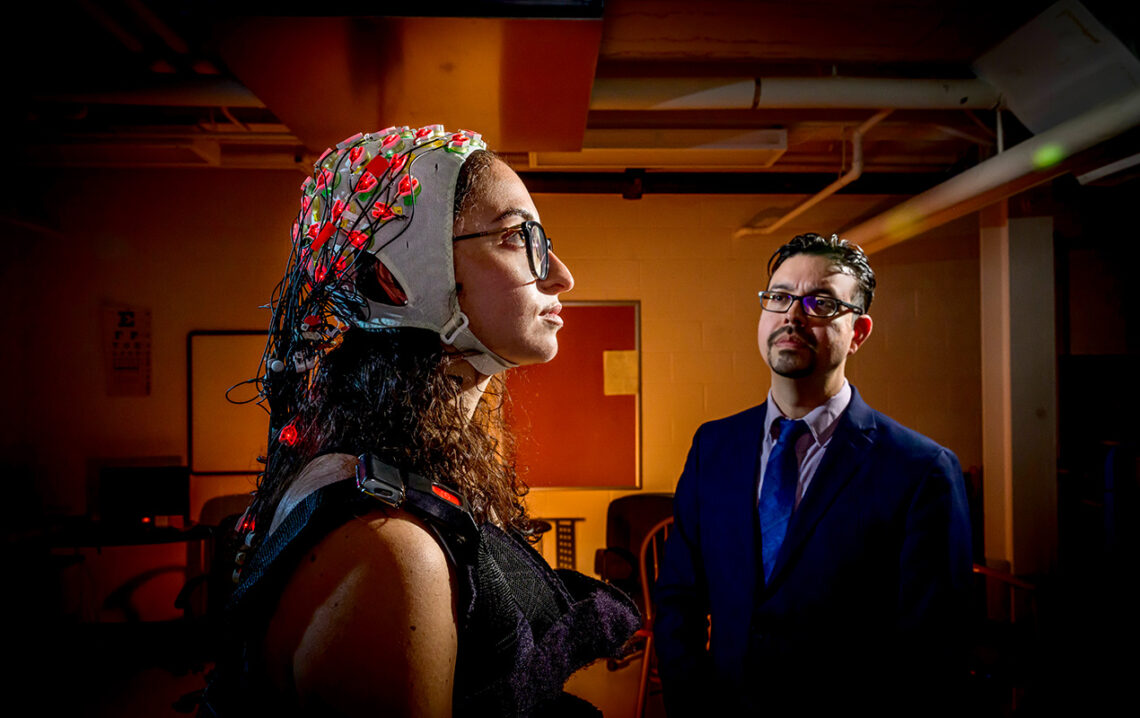
Photo by Fred Zwicky
Our brains sometimes respond excessively to social, physical and mental challenges, and even to benign objects. We want to better understand an individual's responses to such stresses.
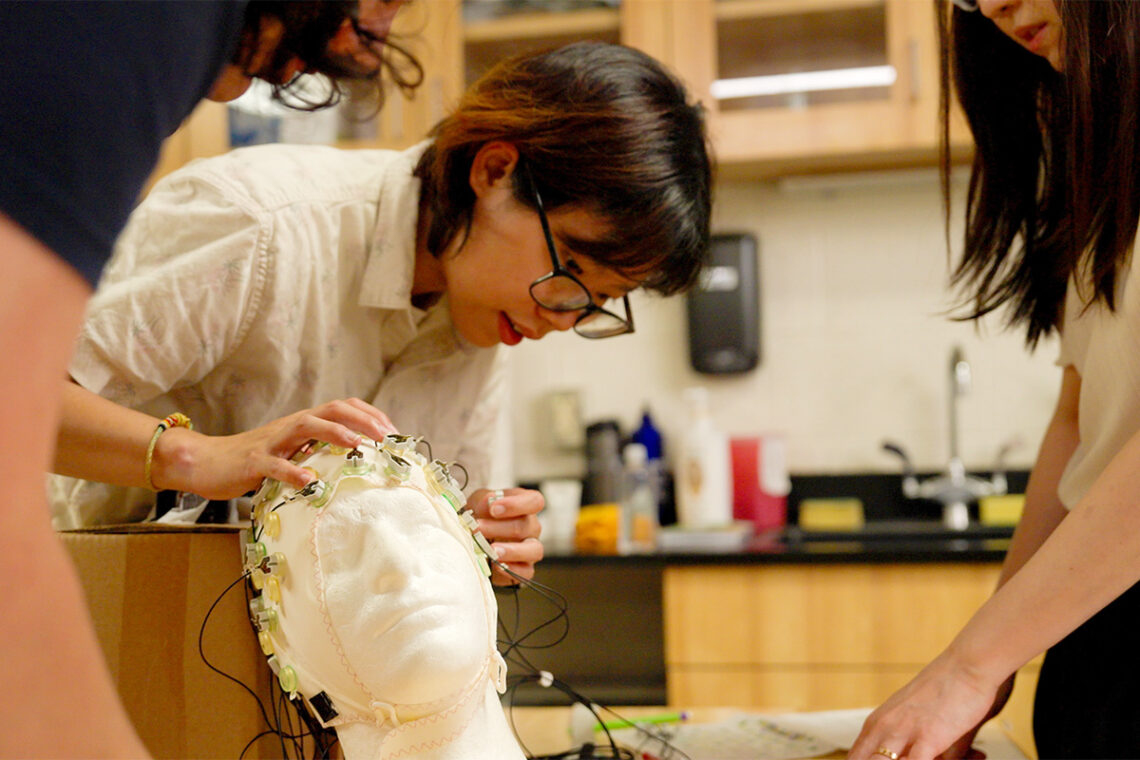
We have gathered numerous wearable devices, including caps, wristbands and "smart shirts." These devices can monitor participants' brain activity in controlled settings, giving us insight into how people respond in real-world scenarios.
A participant enters the room, and we prepare a cap for them that is studded with electrodes to monitor electrical activity in their brain. The electrodes are carefully positioned on the person's scalp to capture the electrical symphony of the brain.
Getting good signal quality requires patience. We must apply conductive gel to each of 64 colored channels, adjusting and readjusting until the numbers turn green on our monitors, indicating each signal is coming through clearly.
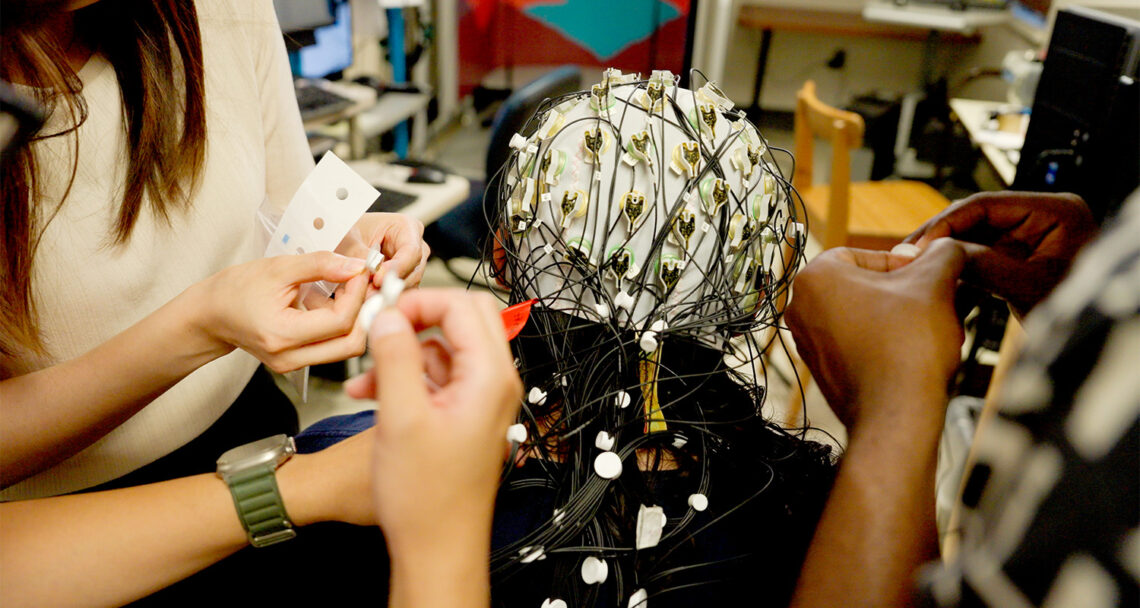
Next, we wrap a smart shirt snugly around the participant's torso. Its embedded sensors monitor the person's heart rate, breathing patterns and movement with every breath and heartbeat. We place a wristband over their nondominant hand. This will track electrodermal activity, skin temperature and blood volume per pulse. Finally, we attach electromyography sensors to the person's neck, shoulders, arm and torso to capture muscle tension.
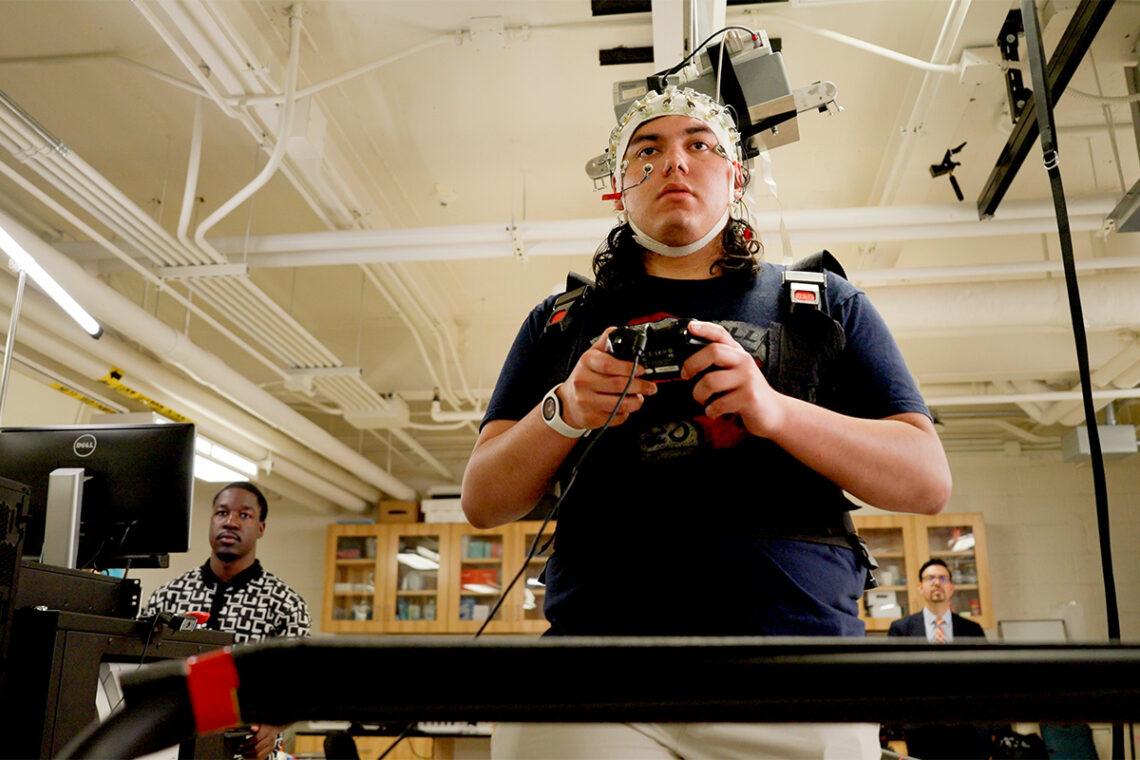
By the time we finish this process, each participant is adorned with multiple sensors and wires but is still able to move naturally through the experimental tasks thanks to the wearable technology.
To help participants return to a more restful baseline after the initial setup, we guide them through a five-minute meditation. Then we start the first challenge: the cold pressor test.
On paper, the test seems straightforward: We ask each participant to immerse their hand in ice water for up to one minute. But in practice, we quickly learn that every participant's pain threshold differs. Some barely flinch; others can't keep their hands in the ice water more than 30 seconds.
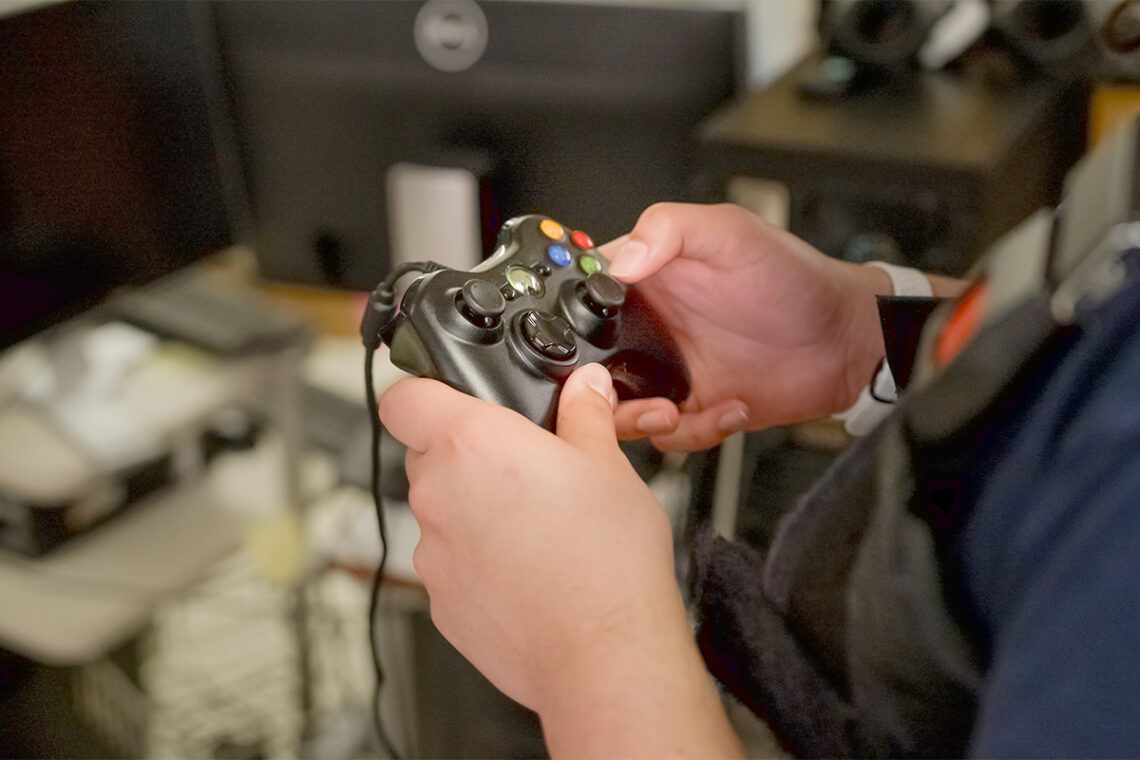
For the next part of the experiment, I am out of the room. I must call in from a remote location via Zoom while my graduate student, Maxine He, guides the participant through the exercise. She tells the student that the interview with me will begin immediately. The short notice often catches the person off guard, amplifying the stress of being judged in a public setting. This is the Trier Social Stress Test, our powerhouse stressor.
The test asks participants to deliver a three-minute speech, then solve a mental arithmetic task, all while being observed by me and the research team. We maintain poker faces throughout the task, giving the participant no clue as to how they're doing.
The anticipation alone sends participants' blood levels of the stress hormone cortisol climbing.
Some participants step up to the challenge with confidence, filling the speech period with ease, their words flowing naturally despite the team of people watching them. Others struggle to reach the three-minute mark. They run out of things to say and fall into uncomfortable silences that stretch on while we maintain our neutral expressions. Some people's voices waver or their hands tremble as they try to recall their prepared points.
The physiological data collected by our sensors tells stories the participants themselves can't always articulate. Heart rates spike during the long pauses and electrodermal activity increases.
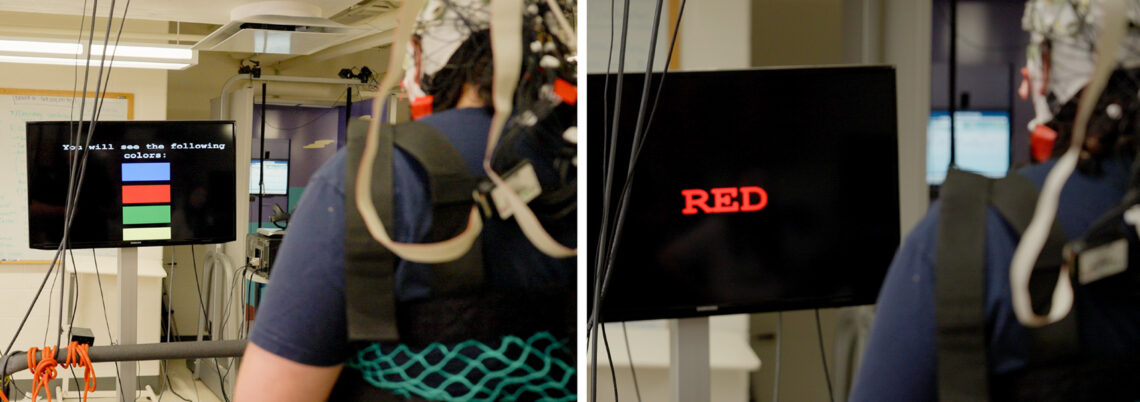
Another test, called a Stroop Test, adds cognitive interference to the mix of stressors. While seated or walking on a treadmill, participants must perform a thinking task that requires a quick response to visual stimuli. The task involves reading the names of colors that are printed in the same, or a different, color. This exercise seems trivial until you're doing it under time pressure while also walking on a treadmill and wearing numerous sensors. The seated version is challenging enough; the walking version adds a layer of complexity that makes the task particularly rich for studying anxiety.
At the end of the session, we answer participants' questions, then lead them to a place to change while we load all the data. Then we prepare for the next stage, where we send each participant home with a kit of wearable devices to monitor their bodies' responses to the challenges of everyday life.
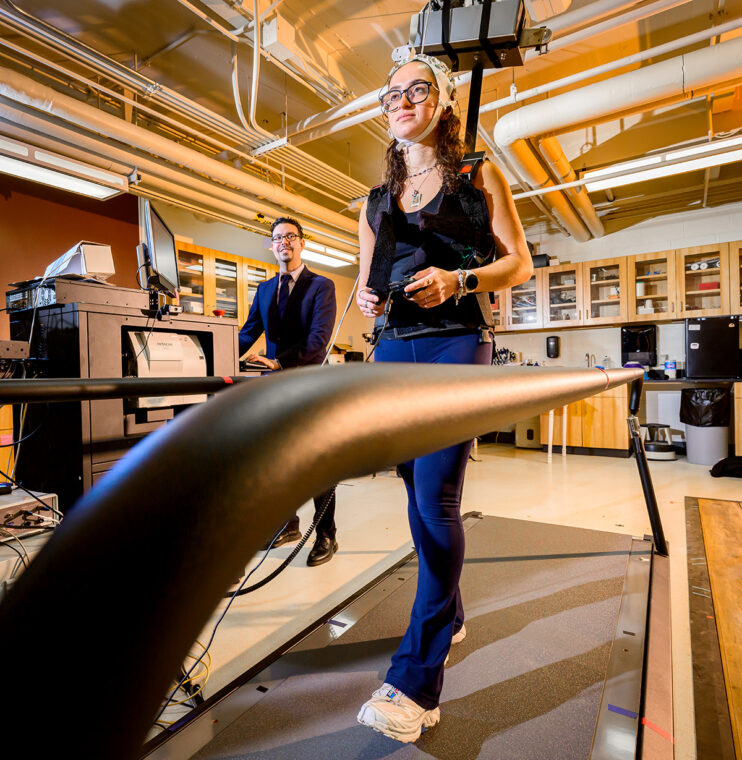
Our work with smart technology has already yielded some useful applications. Earlier this year, we developed a tool for analyzing data from a smart shirt worn during exercise to predict those at higher or lower risk of heart-related ailments. We are also developing models that rely on data from wearables to predict anxiety in users, even without any prior training.
The idea of this work is to make the task of diagnosing and tracking anxiety easier and less costly, and to understand the various physiological responses to stress so that we can better manage it.
This work is supported by the National Center for Supercomputing Applications and a Jump ARCHES endowment through the Health Care Engineering Systems Center at Illinois and the OSF Foundation.






